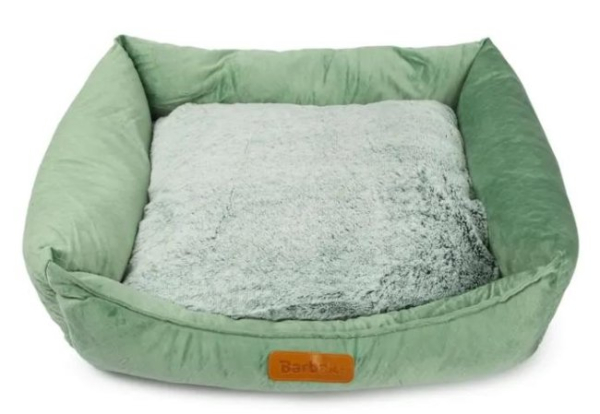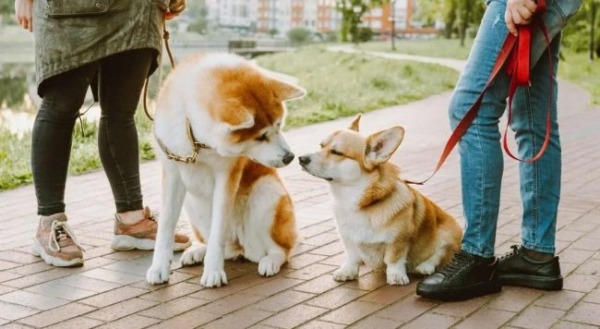
A pet dog is more than just a pet; it's a full-fledged member of the family. Every dog should have its own place where it feels calm, secure, and comfortable. This is precisely why a dog bed exists—a special sleeping area that takes into account the animal's physiological, behavioral, and age-related characteristics. A properly selected dog bed ensures proper rest, promotes health, and improves the pet's psychological well-being.
This article takes a detailed look at the types of dog beds, their design and materials suitable for different breeds and ages, as well as recommendations for care and placement of the sleeping area in the house.
Why does a dog need its own bed?
Many dog owners believe that their pet can sleep on a soft rug, sofa, or even on the floor. However, this approach has significant drawbacks. Floors, especially tile or laminate, are often cold, and constant hypothermia can lead to joint and spinal problems. Furthermore, dogs instinctively need a personal resting area where they can relax and feel safe.
The lounger performs several important functions at once:
Thermal insulation. Protects from cold and drafts, especially in winter.
Sleeping posture support. High-quality models ensure proper spine and joint alignment.
Psychological comfort. The dog gains a personal space, which is important for reducing stress.
Hygiene. The bed is easy to clean and wash, unlike furniture or carpets.
Space management. Your pet knows where it belongs, which helps with training and socialization.
Thus, a bed is not a luxury, but a necessary part of caring for an animal.
Main types of beds
The selection of dog beds is vast, and choosing the right model depends on your dog's habits, size, and age. Let's look at the main categories.
1. Classic pillow
The simplest option: a soft base without sides. Suitable for large breeds that like to sleep stretched out at full length. It's easy to use, portable, and washable.
2. Bed with sides
A more popular type for medium and small breed dogs. The sides create a feeling of security and comfort. The pet can rest its head on the side, like a pillow.
3. House or sleeping shelter
Enclosed models, reminiscent of a miniature house or tent, provide privacy and protection from drafts. They are especially popular among small toy breeds (Chihuahuas, Toy Terriers, and Pomeranians).
4. Transformer mattress
Multifunctional: the sides can be extended, turning the bed into a mat. Suitable for travel and for placing in a carrier.
5. Anatomical beds
They contain orthopedic fillers such as memory foam or latex inserts. These models are especially useful for older dogs and those with joint and spinal issues.
6. Heated or cooled beds
Modern options include electric heating for winter or cooling gels for summer. This is convenient if your pet lives in a region with significant temperature fluctuations.
7. Outdoor and all-season beds
Made from moisture-resistant and durable materials that don't absorb dirt, they are ideal for use in enclosures or on terraces.
Materials and their characteristics
The quality of a dog bed is largely determined by the materials it's made from. They should be safe, durable, and easy to clean.
Upper fabric:
-
Cotton and linen are natural and pleasant to the touch, but they get dirty quickly. They are suitable for calm pets.
-
Oxford, bologna, and nylon are synthetic materials that are resistant to moisture and claws. They are often used in outdoor models.
-
Jacquard, tweed, and velour are decorative fabrics that are pleasant to the touch and are used in designer home furnishings.
-
Eco-leather or vinyl are stylish and easy to clean, but can be slippery if they do not have an inner fabric layer.
Filler:
-
Synthetic fluff or holofiber are light and elastic, hold their shape, and do not cause allergies.
-
Foam rubber is soft, but loses its elasticity over time.
-
Latex or orthopedic memory foam are durable materials that distribute stress on joints.
-
Buckwheat husks or coconut fiber are natural fillers with good ventilation, but require regular drying.
Bottom:
-
It's important that it be slip-resistant and moisture-resistant. Rubberized or PVC fabric is often used.
The optimal material depends on the location of the bed and the pet's behavioral characteristics. Active dogs feel better on thick, durable fabrics, while calmer dogs prefer soft textiles.
How to choose the size of a bed
The main criterion for choosing a dog bed is its size. The bed should allow the pet to stretch out freely without extending beyond the sleeping area.
Recommendations for choosing sizes:
-
For small breeds (up to 10 kg): the diameter or length of the bed is 40–60 cm.
-
For average (10–25 kg): 70–90 cm.
-
For large ones (over 25 kg): from 100 cm and above.
It's important to consider your dog's preferred sleeping position. If it sleeps curled up, a snug fit is sufficient. If your pet likes to stretch out, it's best to choose a bed with more room.
It is also important to remember that puppies grow quickly, and for them it makes sense to choose a slightly larger model.
Care and cleaning features
Regular care of your dog's bed is essential not only for hygiene but also for your dog's health. Hair, dust, and parasites can accumulate in the fabric, so cleaning should be done regularly.
Basic rules:
If the bed has a removable cover, wash it once every 1–2 weeks at 30–40°C.
Use safe cleaning products without strong scents or chlorine.
The filler also needs to be dried and shaken periodically.
For models without removable parts, you can use a vacuum cleaner or a roller brush to remove hair.
If your pet is prone to shedding or is frequently outdoors, it is advisable to choose materials that are easy to clean.
A hygienic bed prevents the development of skin diseases and the appearance of odors in the house.
Where to place the bed
The location of the dog's bed is important. The dog should feel calm and not vulnerable.
Best place:
-
a quiet corner of the room, away from drafts and heating devices;
-
not in the center of the passage, but with an overview – dogs like to watch what's going on;
-
In a private house, you can place an additional bed in the hallway or on the veranda.
If your pet lives in an apartment, it's important that the location is permanent—the dog quickly gets used to its personal space and rests more easily.
Specifics of beds for different breeds
Each breed has its own characteristics that should be taken into account when choosing.
-
Small breeds (Yorkshire Terriers, Pomeranians, Chihuahuas) prefer dog houses or baskets with sides. They provide comfort and warmth.
-
Medium breeds (beagles, cocker spaniels) choose beds with soft sides and removable cushions.
-
Large breeds (Labrador retrievers, German shepherds, Great Danes) require orthopedic mattresses with dense filling. Joint support is especially important for these dogs.
-
Older dogs – choose anatomically designed and low-profile models to make it easy for them to get in and out of.
Common mistakes when choosing a bed
Too small. The dog cannot stretch out fully, which affects posture and circulation.
Inappropriate material. Filling that's too soft can cause discomfort, while hard filling can put pressure on joints.
Difficult to maintain. If the cover is not removable, the bed will quickly lose its freshness.
Incorrect placement. Installing it near a radiator or in a walkway creates stress and overheating.
Ignoring age. Puppies and senior dogs need models with special properties—soft, warm, or with joint support.
Additional accessories
For maximum comfort, owners use cozy mattress pads, blankets, pillows, and seasonal covers for their dog beds. All of this improves comfort and simplifies maintenance. Some dogs enjoy having toys nearby or a small bumper to rest their heads on.
There are also many accessories that enhance the functionality of the sleeping area:
-
waterproof bedding (for puppies);
-
cooling mats (in summer);
-
orthopedic layers (for aging pets);
-
removable covers with zippers.
Environmental and design aspects
Modern manufacturers focus not only on practicality but also on the appearance of their products. Designer dog beds that complement your home's interior are available. They are made from safe, hypoallergenic materials, often using recycled fabrics or eco-certified fillings. Barbaks dog beds are consistently popular among pet owners due to their durability, comfort, and variety of designs. The selection includes classic fabric beds, wicker models, mattress-type beds, and models with side rails, suitable for both small and large breeds.
Multi-level structures are also becoming increasingly popular, such as dog houses, which provide dogs with an additional sense of security.
How to train a dog to use a bed
Some animals don't immediately accept a new environment. For successful adaptation, proceed gradually:
Place the bed where the dog usually rests.
Place a familiar blanket or toy inside to give the area a “personal” scent.
Praise and reward your pet when he stays on the bed.
Don't force it – let the dog get used to it.
After a few days, the animal will begin to perceive the bed as its territory and will use it constantly.
Results
A dog bed is an essential element in creating a comfortable life for your pet. It provides warmth, comfort, and a sense of security, helping to prevent hypothermia and joint strain. When choosing the right model, it's important to consider the pet's size, behavior, age, health, and living conditions.
The choice of materials, designs, and shapes is vast today, so every homeowner can find the perfect option—from a simple mattress to an orthopedic bed or a stylish bed frame.
If you're looking for quality solutions, consider our dog beds—the range includes models in different sizes, shapes, and materials, suitable for dogs of all breeds.
Creating a comfortable sleeping place isn't just a thoughtful gesture; it's a sign of love and attention. A well-chosen bed will provide your dog with restful sleep, well-being, and comfort for years to come.





